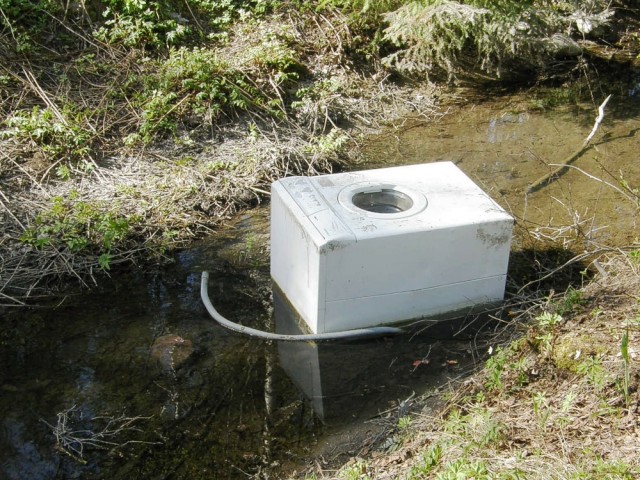This blog post reports on work-in-progress within the DfG course! The post is written by one of the two groups dealing with the Ministry of Environment’s brief on ‘Waste Prevention by extending (electronic product) lifecycle’. The group includes Merja Lang from Turku University’s MA in Future Studies program and Noomi Schulman from Aalto’s MA Creative Sustainability program
After the Mid-Term Review starts the search for solutions
Do you still remember the sunny Sunday morning walks in the forest with your dog, and suddenly you come across something that disturbs the beautiful scenery – perhaps an old washing machine or a broken fridge dumped in the middle of the nature? We have come a long way from those days, but the large amounts of electronic waste remain a great challenge also in today’s Finland regardless of the European Union’s directives’ priority on preventing the waste in the first place.

The course is already halfway through, which means we have a lot of research accomplished. A special focus so far has been given on mapping out the bigger systems regarding the material flows of electronic devices as well as digging deeper into the underlying motives and power relations between different actors in the system. In addition to this, we saw the need to take into account the individual users’ perspectives and understand how they act in the middle of these systems.
The outcomes of our research as well as the progress of the other two teams’ work (Bottom-up “mobility as service” and Energy and maintenance in Finnish housing companies) were presented to the representatives of the ministries as well as other stakeholders at Tieteiden talo on Tuesday the 5th of April. In our presentation we told the story of electronic waste in Finland: How it is planned to be collected and processed and what actually happens in the everyday lives of people when they make decisions on what to buy, what to repair and how to get rid of old and/or broken devices. The presentation was an encouraging experience and we received very useful feedback that we can use when we plan our work ahead. A concrete suggestion was to try to combine different characteristics, such as business models, modes of usage or ownership of different devices and see if an unusual mix would reveal something interesting.

“Less stuff, please”
So what happens next? As we know, electronic waste is one of the fastest growing types of waste and the life cycles of devices are getting shorter and shorter, on one hand due to the fast advancement of technology and on the other, due to poorer quality of the components. Marketing, trends and the flexible payment times are also among the many good reasons why it makes sense for a consumer to buy a new device instead of getting the old one fixed. It is now our task to find creative and fresh ways to extend the life cycles.

We have a few ideas where to look for potential solutions: shared economy, new business models, new services, incentives for repairing and encouraging new lifestyles. More and more people don’t want to own stuff. We want to help them not to have to do so. Considering the usage and disposal of electronic devices from the perspectives of individual users compared to the public procurement opens up possibilities to approach the problem from different directions. Feedback loops, connections that would contribute to a positive behavioral change could be formed between these actors, the public organisations and the individual users.
As the challenge of waste prevention is vast, distinguishing the critical differences between product categories is crucial. From there, we can gain an understanding on which devices have the biggest potential to be leased or shared effectively. An additional aspect to this is that people have different attitudes and senses of privacy regarding different devices. Sharing or leasing might not work in all cases. In the end, our task is not to extend all the life cycles of all devices but find a solution that at least partially solves the problem and points to the right direction. Our ambition is to find leverage points, where relatively small changes will lead to larger-scale impacts.
The DfG course runs for 14 weeks each spring – the 2016 course has now started and runs 22 Feb to 28 May. It’s an advanced studio course in which students work in multidisciplinary teams to address project briefs commissioned by governmental ministries in Finland. The course proceeds through the spring as a series of teaching blocks – Empathic Design, Systems Thinking and Behavioral Insight – in which various research and design methods are applied to addressing the project briefs. Blog posts are written by student groups, in which they share news, experiences and insights from within the course activities and their project development. More information here about the DfG 2016 project briefs. Hold the date for the public finale 09:00-12:00 on Tues 24 May!
